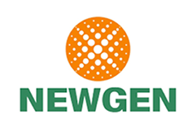.jpg)
Date: 30 Dec, 2024
The secret to staying on top in SEO? Well, it surely is not luck. It is using the right tools to make every move matter. Google Trends is one of those tools. It is a free and easy-to-use tool, packed with valuable data about what people are searching for online.
Whether you are a seasoned SEO or just someone starting with SEO, using Google Trends you can discover new opportunities, optimise your content strategy, and boost your website’s performance.
Let’s see how you can use Google Trends to level up your SEO strategy.
Spot Seasonal Trends to Stay Relevant
Ever wondered why your traffic jumps the most at certain times of the year and falls at others? That is because many of the searches fluctuate due to seasonal trends, which are linked to predictable events, such as holidays, weather changes, or specific seasons. Google Trends shows you when people are most interested in specific topics. Using such data, you can time your content perfectly.
How to use it:
Type in a keyword. Adjust the time frame filter to a yearly or multi-year range. Consider using "Past 5 years" or "Past 10 years" depending on your topic. Adjust the location settings, if needed. You will see a graph showing during which time of the year the same keyword peaks and dips the most.
You can also use the “Compare” feature to analyse similar terms and see how their seasonal trends differ.
Example:
Let’s say you have a fitness blog. Search for “workout routines” and filter by past 5 years. You might notice that the interest spikes every January (Hello to New Year’s Resolution!) and dips in the summer months (Too hot to workout!). So, time your content, promotions, and social campaigns to match peak interest periods.
Jump on Emerging Topics Early
Wish you could predict the next big thing before anyone else does it first?
Incorporating Google Trends in your SEO strategy can help you do just that. Focus on “Rising” filters to spot emerging trends before they become mainstream. For each rising search term, you will either see a percentage (showing the per cent increase in search interest for the selected time frame) or a “Breakout” label (indicating that the search term grew by more than 5,000% over a specific time period. They are low-competition keywords). This will give you a chance to create content and capture early traffic before your competitors.
The bad news is that breakout keywords are often fads. That means they will become super popular for a short period and then will fade away. So, if you are planning to use breakout terms, make sure you strike when the iron is hot.
How to use it:
Search for your main keyword, then scroll down to the "Related Topics" or “Related Queries” section and sort the list by “Rising.” Look for the percentage and breakout terms. Start creating content around these terms to get ahead of the curve.
Example:
Imagine you run a business selling food packaging supplies. You notice the keyword “eco-friendly food packaging” is labelled as a breakout. You can create a line of eco-friendly food packaging and even run a campaign showing how your packaging reduces waste and saves money. All these efforts will give you a head start in ranking for these fresh keywords with rising interest.
Optimise Your Local SEO Strategy
Trying to attract local customers? Get moving with local search trends!
If you operate a local business or serve specific regions, local SEO is important to get noticed by the right people.
Google Trends gives you location-based search data with 100+ countries, states and cities, helping you see what the local audience is interested in and what is trending nearby. This makes it easy to target certain areas and make content that is relevant to a local community.
How to use it:
Type in a keyword related to your business that you think local people might search for. Then start by filtering your keyword by location, whether it is your country, state, or city. This will show you a graph to help you see how many people in that area are interested in your keyword. You can even see interest by subregion and city that will pinpoint specific areas where the keyword is the most trending.
Moreover, when you scroll down, you can find related topics and queries to your keyword. Also, you can use the "Compare" feature to analyse multiple related keywords and see which ones have the highest search volume in the local area.
Armed with this data, you can optimise your website, Google Business Profile, and other local SEO elements to include the most relevant local keywords.
Example:
Let’s say you run a coffee shop with branches in different states, Delhi included. You notice that “iced americano” is trending locally in Delhi. You can start offering iced americano in different flavours and different additions, like with milk, lemon, whipped cream and vanilla.
You can even offer special discounts, run targeted ads campaigns, or create social media posts talking about iced-americano. This ensures that you are showing up when people in your area are looking for exactly what you offer.
Aligning your SEO with local trends makes your content more relevant to the community, attracting more local customers and boosting your business.
Final Thoughts
Google Trends can give your SEO strategy the boost it needs to go from good to great. Knowing what is trending, spotting rising trends, and giving your audience what they want will help you grow your traffic and stay on top.
Whether you are adjusting your strategy or starting over, Google Trends gives you the insights you need to succeed. If you are looking for a little extra help to make sense of the data and turn it into results, we have got your back. Reach out to us at Nine Triangles Digital Pvt Ltd. Being the top digital marketing agency in Delhi, we are here to help you take your SEO to the next level!
























Nine Triangles Digital Pvt Ltd
A2-912, Corporate Park,
Sector 142, Noida - 201305
INDIA
+91 120 435 6917